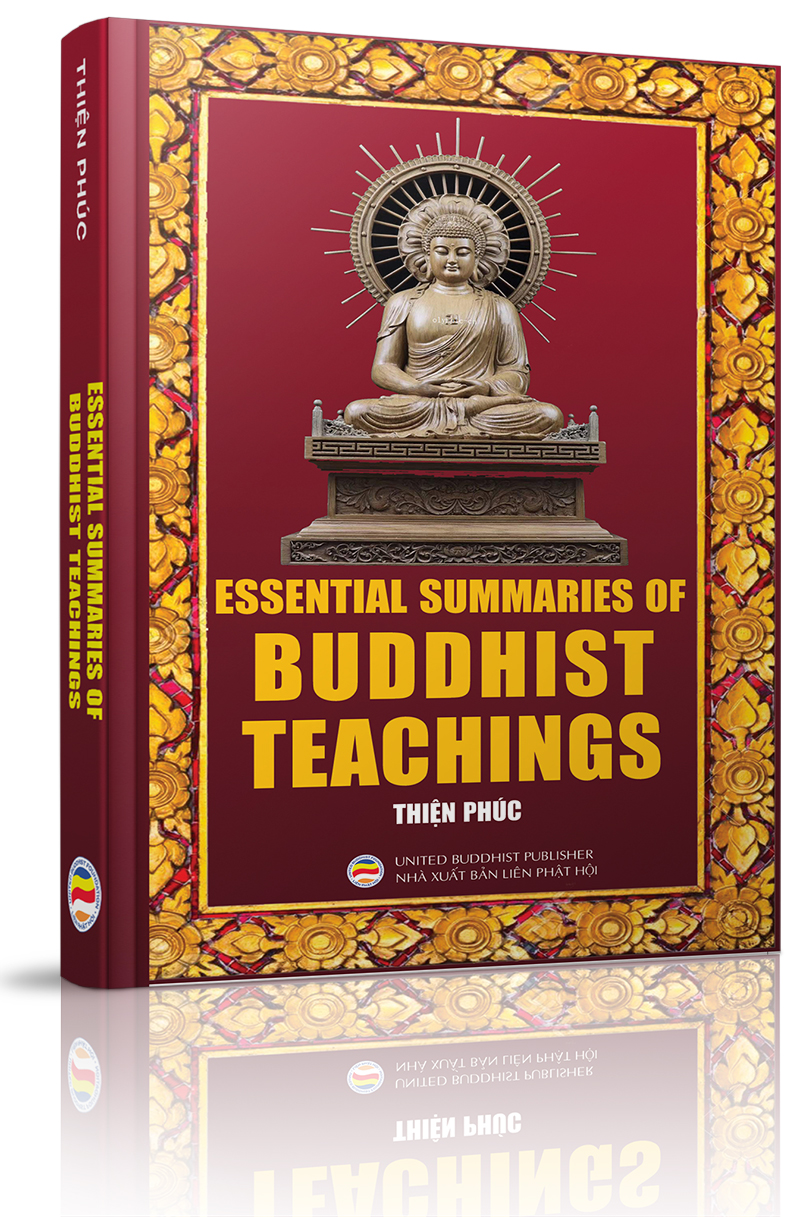Kẻ ngu dầu trọn đời được thân cận bậc hiền trí cũng không hiểu lý pháp, như muỗng với vị canh.Kinh Pháp Cú - Kệ số 64
Hãy sống như thế nào để thời gian trở thành một dòng suối mát cuộn tràn niềm vui và hạnh phúc đến với ta trong dòng chảy không ngừng của nó.Tủ sách Rộng Mở Tâm Hồn
Cơ học lượng tử cho biết rằng không một đối tượng quan sát nào không chịu ảnh hưởng bởi người quan sát. Từ góc độ khoa học, điều này hàm chứa một tri kiến lớn lao và có tác động mạnh mẽ. Nó có nghĩa là mỗi người luôn nhận thức một chân lý khác biệt, bởi mỗi người tự tạo ra những gì họ nhận thức. (Quantum physics tells us that nothing that is observed is unaffected by the observer. That statement, from science, holds an enormous and powerful insight. It means that everyone sees a different truth, because everyone is creating what they see.)Neale Donald Walsch
Hãy thận trọng với những hiểu biết sai lầm. Điều đó còn nguy hiểm hơn cả sự không biết. (Beware of false knowledge; it is more dangerous than ignorance.)George Bernard Shaw
Tôn giáo không có nghĩa là giới điều, đền miếu, tu viện hay các dấu hiệu bên ngoài, vì đó chỉ là các yếu tố hỗ trợ trong việc điều phục tâm. Khi tâm được điều phục, mỗi người mới thực sự là một hành giả tôn giáo.Đức Đạt-lai Lạt-ma XIV
Chớ khinh thường việc ác nhỏ mà làm; đốm lửa nhỏ có thể thiêu cháy cả núi rừng làng mạc. Chớ chê bỏ việc thiện nhỏ mà không làm, như giọt nước nhỏ lâu ngày cũng làm đầy chum vại lớn.Lời Phật dạy
Gặp quyển sách hay nên mua ngay, dù đọc được hay không, vì sớm muộn gì ta cũng sẽ cần đến nó.Winston Churchill
Nếu bạn nghĩ mình làm được, bạn sẽ làm được. Nhưng nếu bạn nghĩ mình không làm được thì điều đó cũng sẽ trở thành sự thật. (If you think you can, you can. And if you think you can't, you're right.)Mary Kay Ash
Mục đích cuộc đời ta là sống hạnh phúc. (The purpose of our lives is to be happy.)Đức Đạt-lai Lạt-ma XIV
Từ bi và độ lượng không phải là dấu hiệu của yếu đuối, mà thực sự là biểu hiện của sức mạnh.Đức Đạt-lai Lạt-ma XIV
Cho dù không ai có thể quay lại quá khứ để khởi sự khác hơn, nhưng bất cứ ai cũng có thể bắt đầu từ hôm nay để tạo ra một kết cuộc hoàn toàn mới. (Though no one can go back and make a brand new start, anyone can start from now and make a brand new ending. )Carl Bard
Trang chủ »» Danh mục »» TỦ SÁCH RỘNG MỞ TÂM HỒN »» Essential Summaries of Buddhist Teachings »» Chapter Four. The Buddha »»
Essential Summaries of Buddhist Teachings
»» Chapter Four. The Buddha
 Xem Mục lục
Xem Mục lục  Vietnamese || Đối chiếu song ngữ
Vietnamese || Đối chiếu song ngữ
- none
- Chapter One. The World During the Pre-Buddhism
- Chapter Two. Buddha’s Birth Day
- Chapter Three. For the Sake of a Great Cause
- »» Chapter Four. The Buddha
- Chapter Five. Buddhism
- Chapter Six. Buddhist Cosmology
- Chapter Seven. Buddhist Outlook on Human Life
- Chapter Eight. The First Sermon
- Chapter Nine. The Meanings of Buddhism
- Chapter Ten. Buddhism: A Religion Which Is Always Based on Human Inner Wisdom
- Chapter Eleven. Is Buddhism Atheistic or Theistic?
- Chapter Twelve. Buddhism Is A Religion of the Truth
- Chapter Thirteen. Buddhism: A Religion of the Truth and A Living Philosophy
- Chapter Fourteen. Buddhist Teachings Is Always in Accord With Life and Science at All Times
- Chapter Fifteen. The Truth of the Four Noble Truths
- Chapter Sixteen. The Truth of the Eighthfold Noble Path
- Chapter 17 - Chapter 19
- Chapter 20 - Chapter 39
- Chapter 40 - Chapter 70
- Chapter 71 - Chapter 90
- Chapter 91 - Chapter 108
- Chapter 109 - Chapter 120
- Chapter 121 - Chapter 136
- Chapter 137 - Chapter 150
- References

If a person commits a bad action (karma) it will be impossible for that person to es-cape from its bad effect. The Buddha is only a Master, who can tell beings what to do and what to avoid but he cannot do the work for anyone. In the Dhammapada Sutra, the Buddha clearly stated: “You have to do the work of sal-vation yourself. No one can do anything for another for salvation except to show the way.”
The word Buddha is not a proper name, but a title meaning “Enlightened One” or “Awakened One.” Prince Siddhartha was not born to be called Buddha. He was not born enlightened; however, efforts after efforts, he became enlightened. Any beings who sincerely try can also be freed from all clingings and become enlight-ened as the Buddha. All Buddhists should be aware that the Buddha was not a god or any kind of supernatural being. Like us, he was born a man. The differnce between the Buddha and an ordinary man is simply that the former has awakened to his Bud-dha nature while the latter is still deluded about it. However, whether we are awakened or deluded, the Buddha nature is equally present in all beings. Bud-dha is an epithet of those who successfully break the hold of ignorance, liberate them-selves from cyclic existence, and teach others the path to liberation. The word “Buddha” derived from the Sanskrit root budh, “to awaken,” it refers to someone who attains Nirvana through meditative practice and the cultivation of such quali-ties as wisdom, patience, and generosity. Such a person will never again be reborn within cyclic existence, as all the cognitive ties that bind ordinary beings to contin-ued rebirth have been severed. Through their meditative practice, bud-dhas have eliminated all craving, and defilements. The Buddha of the present era is referred to as “Sakyamuni” (Sage of the Sakya). He was born Siddhartha Gau-tama, a member of the Sakya clan. The Buddha is One awakened or enlightened to the true nature of existence. The word Buddha is the name for one who has been enlight-ened, who brings enlightenment to others, whose enlightened practice is complete and ultimate. The term Buddha derived from the Sanskrit verb root “Budh” mean-ing to understand, to be aware of, or to awake. It describes a person who has achieved the enlightenment that leads to release from the cycle of birth and death and has thereby attained complete liberation. Chinese translation is “to perceive” and “knowledge.” Buddha means a person who has achieved the en-lightenment that leads to release from the cycle of birth and death and has there-by attained complete liberation.
The lack of hard facts and information, even the date of the Buddha’s life is still in doubt. Indian people believe that the Buddha’s Nirvana took place around 100 years before the time of king Asoka. However, most modern scholars agreed that the Buddha’s Birthday was in some time in the first half of the seventh century B.C. and His Nirvana was about 80 years after His Birthday. The Buddha is the All-Knowing One. He was born in 623 BC in Northern India, in what is now Nepal, a country situated on the slope of Himalaya, in the Lumbini Park at Kapilavathu on the Vesak Fullmoon day of April. Almost 26 centuries ago, the Sakyas were a proud clan of the Khattiyas (the Warrior Caste) living on the foothill of the Hima-laya in Northern Nepal. His royal name was Siddhartha, and his family name was Gautama. He belonged to the illoustrious family of the Okkaka of the Solar race. King Raja Suddhodana founded a strong kingdom with the capital at Kapilavatthu. His wife was Queen Maha Maya, daughter of the Kolya. Before giving birth to her child, according to the custom at that time, she asked for the King’s permission to return to her parents’ home in Devadaha for the childbirth. On the way to her par-ents’ home, the Queen took a rest at Lumbini Park, a wonderful garden where flowers filled the air with sweet odor, while swarms of bees and butterflies were fly-ing around and birds of all color were singing as if they were getting ready to wel-come the Queen. As she was standing under a flowering sala tree, and catching hold of a branch in full bloom, she gave birth to a prince who would later become Buddha Gotama. All expressed their delight to the Queen and her noble baby prince. Heaven and Earth rejoiced at the marvels. The memorable day was the Full Moon Day of Vesak (in May) in 623 BC. On the naming ceremony, many learned Brahmins were invited to the palace. A wise hermit named Asita told the king that two ways would open for the prince: He would either become a universal ruler or would leave the world and become a Buddha. Asita named the baby Sid-dhattha, which means “the One whose wish is fulfilled.”
At first the King was pleased to hear this, but later he was worried about the statement that the prince would re-nounce the world and become a homeless hermit. In the palace, however, delight was followed quickly by sorrow, seven days after the childbirth, Queen Ma-ya sud-denly died. Her younger sister, Pajapati Gotami, the second Queen, be-came the prince’s devoted foster mother, who brought him up with loving care. Although grew up in a luxurious life of a prince with full of glory, he was kind and gentle. He received excellent education in both Vedas and the arts of warfare. A wonderful thing happened at a ploughing festival in his childhood. It was an early spiritual experience which, later in his search for truth, served as a key to his En-lightenment. Once on a spring ploughing ceremony, the King took the prince to the field and placed him under the shade of a rose apple tree where he was watched by his nurses. Because the King himself took part in the ploughing, the prince looked at his father driving a golden plough together with other nobles, but he also saw the oxen dragging their heavy yokes and many farmers sweating at their work. While the nurses ran away to join the crowd, he was left alone in the quiet. Though he was young in age, he was old in wisdom. He thought so deeply over the sight that he forgot everything around and developed a state of meditation to the great surprise of the nurses and his father. The King felt great pride in his son, but all the time he recalled the hermit’s prophecy. Then he surrounded him with all pleas-ures and amusements and young playmates, carefully keeping away from him all knowledge of pain, sadness and death. When he was sixteen years old, the King Suddhodana arranged for his son’s a marriage with the princess Yasodhara, daughter of King Soupra-Buddha, who bore him a son named Rahula.
Although raised in princely luxury and glory, surrounded with splendid palaces, His beauti-ful wife and well-behaved son, He felt trapped amidst this luxury like a bird in a gold cage, a fish in a silver vase. During a visit to the outskirts of the city, outside the four palace portals, He saw the spectacle of human suffering, an old man with white hair, fallen teeth, blurred eyes, deaf ears, and bent back, resting on his cane and begging for his food; A sick man lying at the roadside who moaned painfully; a dead man whose body was swollen and surrounded with flies and bluebottles; and a holy ascetic with a calm appearance. The four sights made Him realize that life is subject to all sorts of sufferings. The sight of the holy ascetic who appeared se-rene gave Him the clue that the first step in His search for Truth was “Renuncia-tion.” Back in his palace, he asked his father to let Him enter monkhood, but was re-fused. Nevertheless, He decided to renounce the world not for His own sake or con-venience, but for the sake of suffering humanity. This unprecedented resolu-tion made Prince Siddartha later become the Founder of Buddhism. At the age of twen-ty-nine, one night He decided to leave behind His princely life. After his groom Chandala saddled His white horse, He rode off the riyal palace, toward the dense forest and became a wandering monk. First, He studied under the guidance of the leading masters of the day sucha Alara Kalama and Uddaka Ramaputta. He learned all they could teach Him; however, He could not find what He was looking for, He joined a group of five mendicants and along with them, He embarked on a life of austerity and particularly on starvation as the means which seemed most likely to put an end to birth and death. In His desire for quietude He emaciated His body for six years, and carried out a number of strict methods of fasting, very hard for ordinary men to endure. The bulk of His body was greatly reduced by this self-torture. His fat, flesh, and blood had all gone. Only skin and bone remained. One day, worn out He fell to the ground in a dead faint. A shepherdess who hap-pened to pass there gave Him milk to drink. Slowly, He recovered His body strength. His courage was unbroken, but His boundless intellect led Him to the de-cision that from now on He needed proper food. He would have certainly died had He not realized the futility of self-mortification, and decided to practice moderation instead. Then He went into the Nairanjana river to bathe. The five mendicants left Him, because they thought that He had now turned away from the holy life. He then sat down at the foot of the Bodhi tree at Gaya and vowed that He would not move until He had attained the Supreme Enlightenment. After 49 days, at the be-ginning of the night, He achieved the “Knowledge of Former Existence,” recollect-ing the successive series of His former births in the three realms. At midnight, He acquired the “Supreme Heavenly Eye,” perceiving the spirit and the origin of the Creation. Then early next morning, He reached the state of “All Knowledge,” real-izing the origin of sufferings and discovering the ways to eliminate them so as to be liberated from birth-death and reincarnation. He became Anuttara Samyak-Sambodhi, His title was Sakyamuni Buddha.
He attained Enlightenment at the age of 35, on the eighth day of the twelfth month of the lunar calendar, at the time of the Morning Star’s rising. After attaining Enlightenment at the age of 35 until his Mahaparinirvana at the age of 80, he spent his life preaching and teaching. He was certaintly one of the most energetic man who ever lived: forty-nine years he taught and preached day and night, sleeping only about two hours a day. Two months after his Enlightenment, the Buddha gave his first discourse entitled “The Turning of The Dharma Wheel” to the five ascetics, the Kodannas, his old com-panions, at the Deer Park in Benares. In this discourse, the Buddha taught: “Avoiding the two extremes of indulgence in sense pleasures and self-mortification, the Tathagata has comprehended the Middle Path, which leads to calm, wisdom, enlightenment and Nirvana. This is the Very Noble Eight-fold Path, namely, right view, right thought, right speech, right action, right livelihood, right effort, right mindfulness, and right concentration.” Next he taught them the Four Noble Truths: Suffering, the Cause of Suffering, the Ceasing of Suffering and the Path leading to the ceasing of suffering. The Venerable Kodanna understood the Dharma and immdediately became a Sotapanna, the other four asked the Buddha to receive them into his Order. It was through the second sermon on the “No-self Quality” that all of them attained Arahantship. Later the Buddha taught the Dhar-ma to Yasa, a rich young man in Benares and his 54 companions, who all becam Ara-hants. With the first 60 disciples in the world, the Budha founded his Sangha and he said to them: “I am free from all fetters, both human and divine, you are also free from all fetters. Go forth, Bhiksus, for the welfare of many, for the happi-ness of many, out of compassion for the world, for the good and welfare , and happiness of gods and men. Preach the Dharma, perfect in the beginning, perfect in the mid-dle, perfect in the end, both in spirit and in letter. Proclaim the holy life in all its fullness and purity.” With these words, he sent them into the world. He him-self set out for Uruvela, where he received 30 young nobles into the Order and convert-ed the Three Brothers Kassapa, who were soon established in Arahantship by means of “the Discourse On Fire.” Then the Buddha went to Rajagaha, to visit King Bimbisara. The King, on listening to the Dharma, together with his attend-ants, obtained the Fruit of the First Path and formally offered the Buddha his Bamboo Grove where the Buddha and the Sangha took up their residence for a long time. There, the two chief disciples, Sariputra and Mogallana, were received into the Or-der. Next, the Buddha went to Kapilavatthu and received into the Order his own son, Rahula, and his half-brother Nanda. From his native land, he re-turned to Ra-jagaha and converted the rich banker Anathapindika, who presented him the Jeta Grove. For 45 years, the Buddha traversed all over India, preaching and making converts to His religion. He founded an order of monks and later another order of nuns. He challenged the caste system, taught religious freedom and free inquiry, raised the status of women up to that of men, and showed the way to liberation to all walks of life. His teaching were very simple but spiritually meaningful, requiring people “to put an end to evil, fulfil all good, and purify body and mind.” He taught the method of eradicating ignorance and suppressing sufferings. He encouraged people to maintain freedom in the mind to think freely. All people were one in the eyes of the Buddha. He advised His disciples to practice the ten supreme quali-ties: compassion, wisdom, renunciation, discipline, will power, forbearance, truth-fulness, determination, goodwill, and equanimity. The Buddha never claimed to be a deity or a saint. He always declared that everyone could become a Buddha if he develops his qualities to perfection and is able to eliminate his ignorance complete-ly through his own efforts. At the age of 80, after completing His teaching mission, He entered Nirvana at Kusinara, leaving behind millions of followers, among them were His wife Yasodara and His son Rahula, and a lot of priceless doctrinal treas-ures considered even today as precious moral and ethical models.
The Buddha said: “I am not the first Buddha to come upon this earth, nor shall I be the last. In due time, another Buddha will arise, a Holy one, a supreme Enlight-ened One, an incomparable leader. He will reveal to you the same Eternal Truth which I have taught you.” Before entering Nirvana, the Buddha uttered His last words: “Nothing in this world is precious. The human body will disintegrate. Ony is Dharma precious. Only is Truth everlasting.” The Buddha is the person who has achieve the enlightenment that leads to release from the cycle of birth and death and has thereby attained complete liberation—The word Buddha is not a proper name but a title meaning “Enlightened One” or “Awakened One.” Prince Siddhar-tha was not born to be called Buddha. He was not born enlightened, nor did he re-ceive the grace of any supernatural being; however, efforts after efforts, he be-came enlightened. It is obvious to Buddhists who believe in re-incarnation, that the Buddha did not come into the world for the first time. Like everyone else, he had undergone many births and deaths, had experienced the world as an animal, as a man, and as a god. During many rebirths, he would have shared the common fate of all that lives. A spiritual perfection like that of a Buddha cannot be the result of just one life. It must mature slowly throughout many ages and aeons. However, af-ter His Enlightenment, the Buddha confirmed that any beings who sincerely try can also be freed from all clingings and become enlightened as the Buddha. All Buddhists should be aware that the Buddha was not a god or any kind of super-natural being (supreme deity), nor was he a savior or creator who rescues sen-tient beings by taking upon himself the burden of their sins. Like us, he was born a man. The difference between the Buddha and an ordinary man is simply that the former has awakened to his Buddha nature while the latter is still deluded about it. How-ever, the Buddha nature is equally present in all beings.
MUA THỈNH KINH SÁCH PHẬT HỌC
DO NXB LIÊN PHẬT HỘI PHÁT HÀNH
Mua sách qua Amazon sẽ được gửi đến tận nhà - trên toàn nước Mỹ, Canada, Âu châu và Úc châu.
Quý vị đang truy cập từ IP 216.73.216.24 và chưa ghi danh hoặc đăng nhập trên máy tính này. Nếu là thành viên, quý vị chỉ cần đăng nhập một lần duy nhất trên thiết bị truy cập, bằng email và mật khẩu đã chọn.
Chúng tôi khuyến khích việc ghi danh thành viên ,để thuận tiện trong việc chia sẻ thông tin, chia sẻ kinh nghiệm sống giữa các thành viên, đồng thời quý vị cũng sẽ nhận được sự hỗ trợ kỹ thuật từ Ban Quản Trị trong quá trình sử dụng website này.
Việc ghi danh là hoàn toàn miễn phí và tự nguyện.
Ghi danh hoặc đăng nhập
... ...


 Trang chủ
Trang chủ








